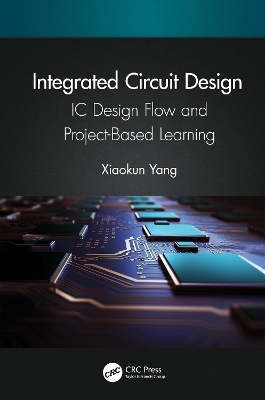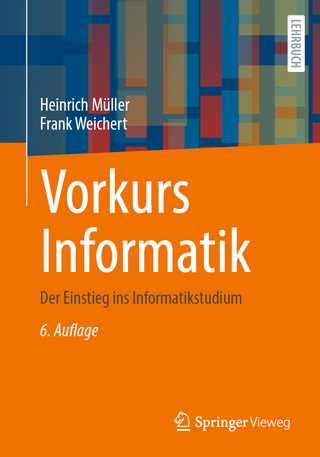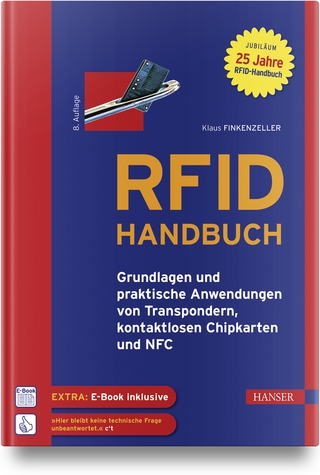
Integrated Circuit Design
CRC Press (Verlag)
978-1-032-03079-1 (ISBN)
This textbook seeks to foster a deep understanding of the field by introducing the industry integrated circuit (IC) design flow and offering tape-out or pseudo tape-out projects for hands-on practice, facilitating project-based learning (PBL) experiences.
Integrated Circuit Design: IC Design Flow and Project-Based Learning aims to equip readers for entry-level roles as IC designers in the industry and as hardware design researchers in academia. The book commences with an overview of the industry IC design flow, with a primary focus on register-transfer level (RTL) design, the automation of simulation and verification, and system-on-chip (SoC) integration. To build connections between RTL design and physical hardware, FPGA (field-programmable gate array) synthesis and implementation is utilized to illustrate the hardware description and performance evaluation. The second objective of this book is to provide readers with practical, hands-on experience through tape-out or pseudo tape-out experiments, labs, and projects. These activities are centered on coding format, industry design rules (synthesizable Verilog designs, clock domain crossing, etc.), and commonly-used bus protocols (arbitration, handshaking, etc.), as well as established design methodologies for widely-adopted hardware components, including counters, timers, finite state machines (FSMs), I2C, single/dual-port and ping-pong buffers/register files, FIFOs, floating-point units (FPUs), numerical hardware (Fourier transform, matrix-matrix multiplication, etc.), direct memory access (DMA), image processing designs, neural networks, and more.
The textbook caters to a diverse readership, including junior and senior undergraduate students, as well as graduate students pursuing degrees in electrical engineering, computer engineering, computer science, and related fields. The target audience is expected to have a basic understanding of Boolean Algebra and Karnaugh Maps, as well as prior familiarity with digital logic components such as AND/OR gates, latches, and flip-flops. The book will also be useful for entry-level RTL designers and verification engineers who are embarking on their journey in application-specific IC (ASIC) and FPGA design industry.
Dr. Xiaokun Yang currently serves as an Associate Professor at the College of Science and Engineering at the University of Houston Clear Lake, located in Houston, Texas. Additionally, since 2022, he has held the role of Affiliate Faculty at Lawrence Berkeley National Laboratory, situated in Berkeley, California. Dr. Yang earned his Ph.D. in the Department of Electrical and Computer Engineering at Florida International University (FIU) in the spring of 2016. He also brings extensive industry experience, having worked as ASIC Design and Verification Engineer at Advanced Micro Devices (AMD) and China Electronic Corporation (CEC) during 2007-2012. Dr. Yang's research interests center on specialized hardware design and acceleration for future high-performance computing, design automation for numerical hardware and machine learning, and advanced high-performance SoC architecture. As the first author or corresponding author, Dr. Yang has published more than 45 papers including 3 patents, more than 15 peer-review journals, and more than 30 prestigious international conferences. He has served as guest editor and journal reviewers including IEEE Transactions on Computer, IEEE Transactions on VLSI, IEEE Transactions on Education, ACM Transactions on Architecture and Code Optimization, and MDPI Micromachines, and numerous conference committees including ISQED and ISVLSI.
Chapter 1- Introduction to IC Design
Chapter 2- IC Design Flow
Chapter 3- Introduction to Verilog HDL
Chapter 4- RTL Design with Verilog HDL
Chapter 5- Design Simulation with Verilog HDL
Chapter 6- Synthesis: Matching Verilog HDL with Basic Combinational and Sequential Circuits
Chapter 7- FSM Design
Chapter 8- FSM-Datapath Design and Bus Communication
Chapter 9- Numerical Hardware Design and Integration
Chapter 10- Streaming and Iterative Design on Numerical Hardware
Chapter 11- Timing Constraints and High-Speed RTL Design
Chapter 12- SoC Design and Integration
| Erscheinungsdatum | 02.11.2024 |
|---|---|
| Zusatzinfo | 43 Tables, black and white; 224 Line drawings, black and white; 12 Halftones, black and white; 236 Illustrations, black and white |
| Verlagsort | London |
| Sprache | englisch |
| Maße | 156 x 234 mm |
| Gewicht | 1100 g |
| Themenwelt | Mathematik / Informatik ► Informatik ► Programmiersprachen / -werkzeuge |
| Mathematik / Informatik ► Informatik ► Software Entwicklung | |
| Mathematik / Informatik ► Informatik ► Theorie / Studium | |
| Technik ► Elektrotechnik / Energietechnik | |
| Technik ► Umwelttechnik / Biotechnologie | |
| ISBN-10 | 1-032-03079-8 / 1032030798 |
| ISBN-13 | 978-1-032-03079-1 / 9781032030791 |
| Zustand | Neuware |
| Informationen gemäß Produktsicherheitsverordnung (GPSR) | |
| Haben Sie eine Frage zum Produkt? |
aus dem Bereich


